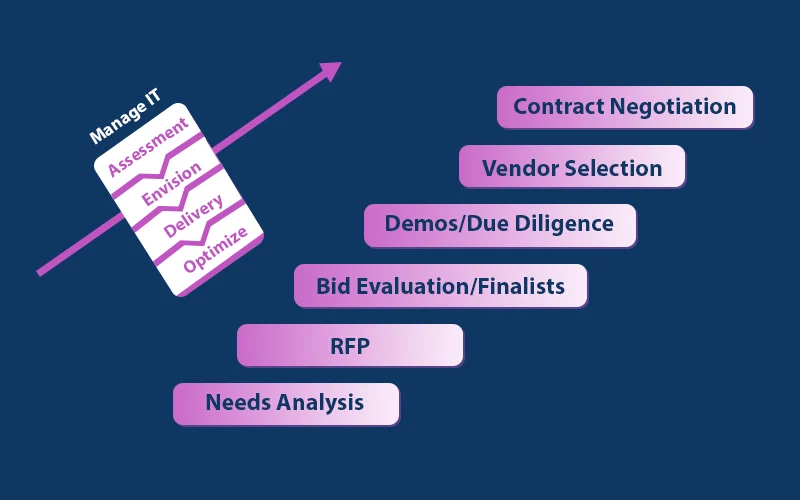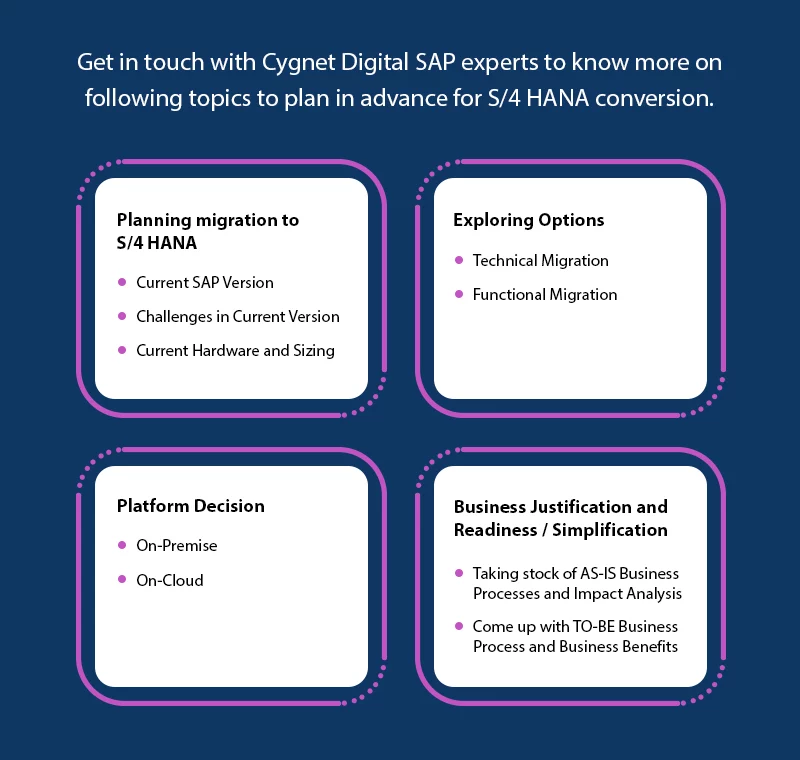This blog brings you a deeper understanding of the benefits of SAP S/4 HANA, in continuation of the previous blog ‘Benefits of SAP S/4HANA: The Future of Business Operations (1/4)‘
In today’s dynamic business landscape, SAP S/4HANA emerges as a game-changing solution, empowering organizations to swiftly adapt to evolving business requirements while ensuring scalability, speed, flexibility, and simplicity. With its advanced in-memory database, HANA, S/4HANA delivers accelerated analytics, reduced costs, and unparalleled performance.
SAP customers are facing some tough decisions like to stay on ECC with the hope that SAP pushes back its support sunset date beyond 2027 or migrate to S/4HANA or moves to an entirely different ERP system.
As of the second quarter of 2022, SAP SE, the renowned German software company, announced a remarkable milestone with 20,000 subscribers for their S/4HANA enterprise resource planning (ERP) package. This figure shows substantial growth within a few years, surging from a mere 370 subscribers in 2015 to an impressive 10,000+ in just four years.

Top business benefits
For businesses, SAP S/4HANA presents a multitude of advantages as highlighted by experts in the field. These encompass process automation, simplification, enhanced speed and flexibility, cost reduction, and accelerated analytics facilitated by the powerful HANA in-memory database. Moreover, S/4HANA offers a user-friendly interface, making it easier to navigate compared to ECC, and provides a seamless transition to cloud-based operations.
Beyond the fundamental benefits, S/4HANA stands out with its exceptional architecture, diverging from traditional relational databases. By leveraging in-memory computing and storing data in columns, the system achieves superior performance and speed. This innovative approach enables near-real-time analytics, harnesses the full potential of computational capabilities, and significantly reduces data footprints through compression capabilities. The following list showcases some of the top business benefits that SAP S/4HANA brings to the table.
5) Simplify your processes
The old and traditional ERP systems were designed in a way to meet small and medium-large industries with fixed processes, traditional way of integration, limited process automation offerings and capability for scalability and adoption of change to growing and changing demands, a longer time for change implementation and rollouts, etc which has become the history now by S/4 HANA. With the way the world is changing towards digitalization, organizations are relying on organic and inorganic growth to improve their top line and bottom line by reducing the TOC and Improving ROI and that’s one of the benefits realized by standardization and simplification of complex and critical processes. These will not only improve user experience but also gain more user productivity.
The advantage of SAP S/4 HANA and traditional Enterprise Resource Planning Software is that it helps you standardize organization-wide processes and restructures your IT environment in a more transparent and centralized way. After integration over the cloud product offerings to connect your customers and suppliers to gather on the same platform, all the corresponding business processes run more efficiently and become way easier to maintain and manage.
6) More accurate forecasting
Embedded AI and machine learning applications are continuing to evolve slowly but steadily in S/4HANA to improve modeling, predictive outcomes and forecasting. A residential and commercial propane gas retailer, for example, could use the Universal Data Element Framework for demand forecasting based on historical and consumption data and pull in third-party factors like the weather. The retailer could then develop a model capable of predicting the demand, generating orders and timely distributing the product to customers in a designated region.
7) Reporting and compliance
With older technology underpinning their business processes, companies were facing significant challenges in producing the reports and filings required by compliance regulations. For several organizations, a slow and labor-intensive financial close at the end of each financial period was a challenge that they looked to alleviate with S/4HANA.
8) Integration and mobility
Before deploying S/4HANA, companies were unable to extend their legacy solutions to take advantage of recent software developments. In addition to lacking extensibility to other applications, companies could not extend their enterprise capabilities to employees in the field.
9) Reduced IT costs
Adopting S/4HANA is a smart move as far as cost efficiency is concerned. You can bring together all the analytical and transactional capabilities of a variety of systems in one location. This enables the reduced and consolidated hardware and software, and infrastructure requirements into one SAP S/4 HANA solution that offers both transactional and analytical reporting capabilities for real-time decision-making requirements. This is immensely better decision-making.
10) Improved cross-functional coordination
The benefits of centralized data extend beyond the ability to plan across silos. On the production side, visibility into quality control and manufacturing execution results in identifying possible issues faster and improving overall performance. The mobile capabilities of the platform allow users, whether remote or on the production floor, to input data and track the progress of a job. As a result, organizations can operate closer to real-time, improving the speed at which issues are resolved and reducing inefficiencies caused by information lags.
11) Extend your flexibility
One of the most important advantages of SAP S/4HANA over ECC is that SAP’s newest Business Suite offers you several deployment options. Choose to host SAP S/4HANA on-premises or decide on a public, private or hybrid cloud solution. Providing global access to your corporate data resources is what makes your company truly flexible and agile.
12) Innovate your business
SAP S/4HANA and forward-looking technologies go hand in hand which makes your workflow more efficient. State-of-the-art innovations such as Artificial Intelligence, Machine Learning, Internet of Things or Robotic Process Automation can be smoothly integrated into the platform. These solutions keep your business productive and make your company ready for the future.
The only way forward
Migrating an ERP is no easy job, and not every organization is ready for the big bang. After all, it requires substantial time and money and impacts current business operations.
However, S/4HANA has significant advantages, like speed and performance, process automation and easy integration with business networks that helps you speed up critical enterprise-wide processes to accelerate revenue boosts, cost savings, and innovations. Instead of deliberating on whether your business needs to migrate or not, you might as well bite the bullet and reap the benefits of S/4HANA now rather than later.
Nearly 20000 organizations have already moved or adopted S/4 HANA as of July/2022 and nearly 300K + customers will migrate to SAP S/4 HANA before 2027. For them, this is the right time to decide and plan to move towards SAP S/4 HANA.












